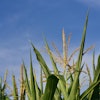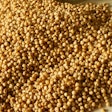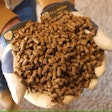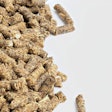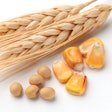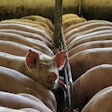
As global agriculture pivots toward sustainability, feed mills and nutritionists play a vital role in incorporating alternative, eco-friendly ingredients into animal diets. Sustainable ingredient sourcing not only addresses environmental concerns but also enhances the long-term resilience of the feed and livestock sectors.
By working closely, nutritionists and feed mills can integrate alternative ingredients without compromising feed quality or animal health, ensuring responsible production practices and a positive environmental impact.
Why sustainable sourcing matters
Traditional feed ingredients like corn, soy and fish meal are heavily utilized, but their production has substantial environmental impacts, including high water and energy demands, deforestation and greenhouse gas emissions.
By sourcing alternative ingredients, feed mills can reduce dependency on these traditional resources, lower their carbon footprint and adapt to changing market demands for more eco-friendly practices.
Sustainable sourcing also addresses supply chain volatility, offering feed mills greater resilience against price fluctuations and ingredient shortages.
Key sustainable ingredients for feed mills
- Co-products: Co-products from the food and biofuel industries, such as distillers’ grains, brewers' grains and oilseed meals, offer cost-effective, high-protein alternatives to conventional ingredients. These co-products are already present in many feed formulations but have further potential to replace traditional ingredients without compromising nutritional quality.
- Insect meal: Insect farming, especially of species such as black soldier flies and mealworms, is gaining traction as a sustainable protein source. Insects have a high feed conversion efficiency and can be reared on organic waste, making them an environmentally friendly option. Insect meal is particularly promising in aquaculture and poultry feeds, where it closely resembles natural diets.
- Algae and microalgae: Algae are nutrient-dense and can be cultivated with minimal land and water. High in protein and essential fatty acids, algae are a sustainable alternative to fish meal and oil. Their use in poultry, pig and fish feeds has shown positive results, though scaling production to a cost-competitive level remains a challenge.
- Single-cell proteins (SCPs): SCPs, derived from bacteria, yeast and fungi, are a promising alternative to traditional protein sources. SCP production is highly efficient, using minimal land and water, and these proteins can be tailored to include specific amino acids, making them suitable for precision nutrition. SCPs have been shown to improve feed efficiency in poultry and swine.
- Forage and cover crops: Integrating forage-based ingredients, such as clover and alfalfa, provides a renewable protein and fiber source, reducing reliance on other high-impact crops. Additionally, cover crops contribute to soil health, improving long-term agricultural sustainability. For ruminants, forage-based feeds align with their natural digestive capabilities, promoting better health outcomes.
Nutritional considerations and challenges
While sustainable ingredients offer environmental benefits, they also pose certain challenges. Many alternative ingredients require adjustments to formulations to meet nutritional requirements and maintain animal health. Here’s how nutritionists and feed mills can address these challenges:
- Protein and amino acid balance: Alternative protein sources may lack certain amino acids, requiring adjustments in formulations to avoid deficiencies. Nutritionists can compensate by blending different protein sources or using synthetic amino acid supplements to ensure balanced diets.
- Digestibility and palatability: Some sustainable ingredients, such as insect meal, may initially be less palatable or digestible for certain animals. In these cases, gradual introduction or processing techniques — including grinding, pelleting or fermentation — can enhance acceptance and nutrient absorption.
- Anti-nutritional factors (ANFs): Ingredients such as legumes and algae can contain ANFs, for example, tannins and phytic acid, which interfere with nutrient absorption. By working closely, nutritionists and feed mills can use additives or enzyme treatments to mitigate ANFs, ensuring nutritional integrity.
Strategies for effective collaboration
Incorporating sustainable ingredients requires seamless cooperation between nutritionists and feed mills. Here’s how both parties can work together effectively:
- Regular ingredient evaluation: Feed mills can assist nutritionists by sourcing ingredient samples and conducting routine nutritional analyses. This enables accurate assessment of nutrient content, digestibility and ANFs, ensuring formulations meet animals’ needs without compromising quality.
- Adaptable formulation practices: Nutritionists can employ dynamic feed formulation techniques to accommodate fluctuations in ingredient availability and quality. This adaptability ensures that sustainable ingredients can be integrated into the feed without disrupting production or animal performance.
- Pilot testing and gradual implementation: Before fully transitioning to a new sustainable ingredient, feed mills and nutritionists can run small-scale trials to monitor animal performance, health and product quality. This approach helps refine formulations, identify potential challenges and ensure smooth integration.
- Cost-benefit analysis: Incorporating sustainable ingredients should also make financial sense. By conducting a cost-benefit analysis, feed mills and nutritionists can identify ingredients that meet sustainability and economic goals, making it easier to justify their use across the production line.
The benefits of sustainable sourcing in feed milling
- Reduced environmental impact: Sustainable ingredients such as algae, SCPs and insect meal have lower greenhouse gas emissions and resource demands than traditional feed sources. This reduction supports industrywide sustainability goals, making feed production more eco-friendly.
- Improved supply chain resilience: Diversifying ingredient sources reduces reliance on conventional commodities, making the feed industry less vulnerable to market volatility and shortages.
- Enhanced market competitiveness: With consumer demand for eco-friendly products rising, sustainable feeds offer a competitive edge, aligning with buyers’ preferences and opening opportunities for premium product lines.
- Long-term cost savings: While some alternative ingredients may initially be more costly, their stable supply and potential for reduced environmental regulation can translate into cost savings over time.
Sustainable ingredient sourcing offers feed mills and nutritionists an opportunity to contribute positively to animal health and environmental stewardship. By working together to evaluate, pilot and incorporate alternative ingredients, they can make meaningful progress toward sustainable feed production without sacrificing quality.
Through thoughtful formulation and collaboration, the feed industry can pave the way for a more resilient, sustainable future in animal agriculture.

